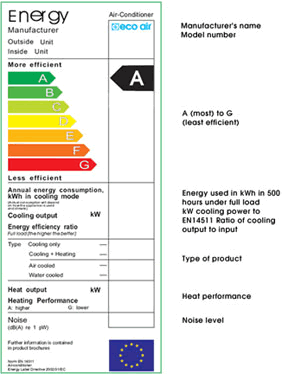
Air conditioning split system specialists - Est. 1997
Getting Green with clean air
Protecting our environment is now a high priority and it is something that our engineers have extensive knowledge about. Indeed, it is something we have actively considered for many years. After all a low carbon footprint is the net result of specifying energy efficient products or simply approaching a heating or cooling requirement with a broad mind (and knowledge) as to all the technologies available. Of course, there are also government targets and legislation to consider - by example the Energy Performance Buildings Directive (EPBD), the new 10% renewable energy target and the requirements of part L or F-Gas of the Building Regulations. Together we will work with you to ensure compliance and can quantify a building's energy efficiency and CO2 emissions.
The reward is not just an effective and socially responsible system, but also one, which will save on energy costs. You may also qualify for some valuable Government schemes run by the Carbon Trust:
COP & EER
COP – the ratio that measures the energy efficiency of the HEATING performance.
EER – the ratio that measure the energy efficiency of the COOLING performance.
Both ratios are determined by the amount of heating and cooling generated by the air conditioning compared with the 1kW of electricity it consumes. So, an air conditioner that generates 3.6kW of heating when using 1kW is say to have a COP of 3.6. Therefore the air conditioning that generates most heating out of 1kW is the most efficient, hence the higher the COP the more efficient is the air conditioning. Likewise, an air conditioner that generates 3.6kW of cooling when using 1kW is say to have an EER of 3.6.
How to compare products
Compare the COP and EER ratios of products with the same output to determine which is more energy efficient. For example, compare two air conditioning units both with 3.5kW (12000 BTU) power output, the one with the higher COP and EER is more energy efficient.
What is an Energy Rating Label?
 All household air conditioners (under 12kW cooling) must comply with the Energy Information (Household Air Conditioners) (No 2) Regulations 2005. This regulation implemented the energy labelling for air conditioners. The key points are:-
All household air conditioners (under 12kW cooling) must comply with the Energy Information (Household Air Conditioners) (No 2) Regulations 2005. This regulation implemented the energy labelling for air conditioners. The key points are:-
- Manufacturers have an obligation to provide Energy Labels to dealers for their product
- The design of the label must comply with the Regulations and include the energy efficiency class of A to G
- The information provided on the energy label must be measured in accordance with the harmonised standard EN 14511
Why is Energy Label necessary?
It allows consumers to compare the energy efficiencies of the air conditioning from different manufacturers based on their performances benchmarked against a harmonised test standard, namely EN 14511. Research shows that 87% of British consumers are aware of the A-G standards. 97% of European consumers understand that A is the most energy efficient appliance rating.
Why are correct Energy Labels important to retailers?
A dealer or retailer must by law provide information required to be on the energy labels clearly and visibly at the point of sale whether online or offline. The energy class should of course conform to EN 14511.
What information is required on the label?
- Supplier's name or trademark.
- Model
- Energy efficiency class (A-G)
- Indicative annual energy consumption, assuming full load at 500 hours per year.
- Cooling output in kW at full load.
- The EER (energy efficiency ratio) in cooling mode at full load
- Type of appliance: cooling only, cooling/ heating
- Cooling mode: air-cooled, water-cooled
- Noise rating, where applicable
- Heat output in kW at full load.
- The COP (coefficient of performance) in heating mode & energy efficiency class (COP = 1 if resistive element heater)


Registered Office: 251a Queensway Bletchley Milton Keynes MK2 2EH
Tel: 01908 867533 Fax: 01908 508967 E-Mail: sales@eds-aircon.co.uk